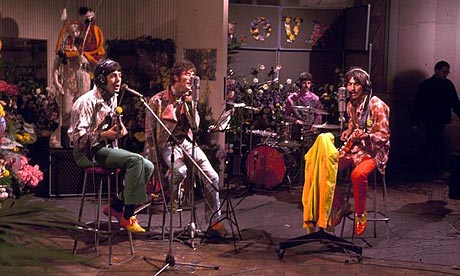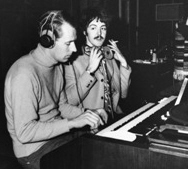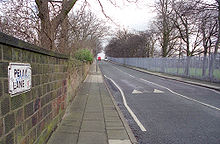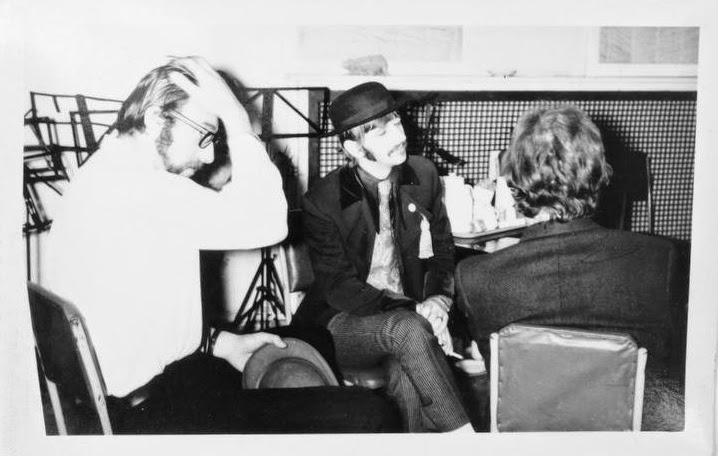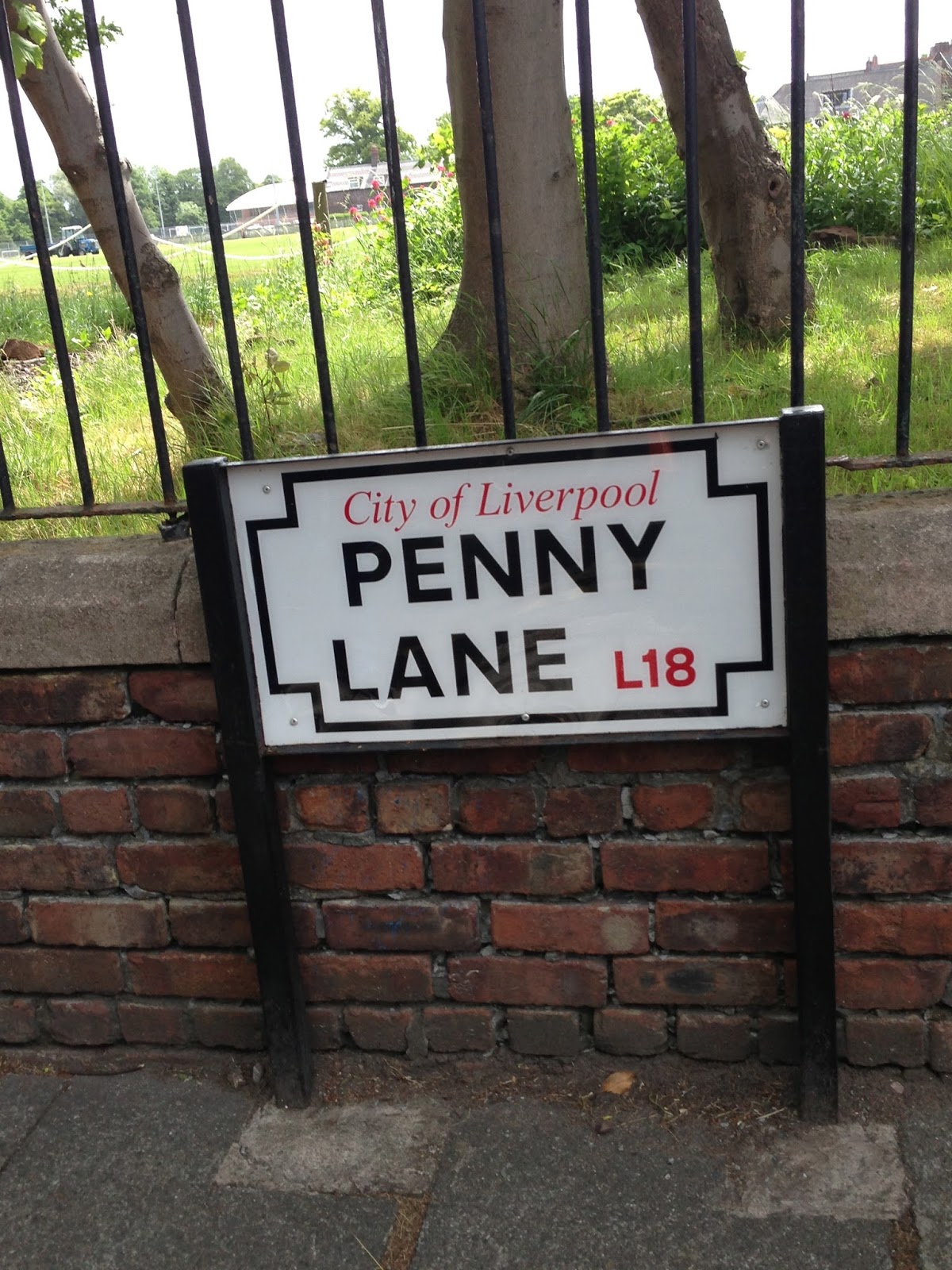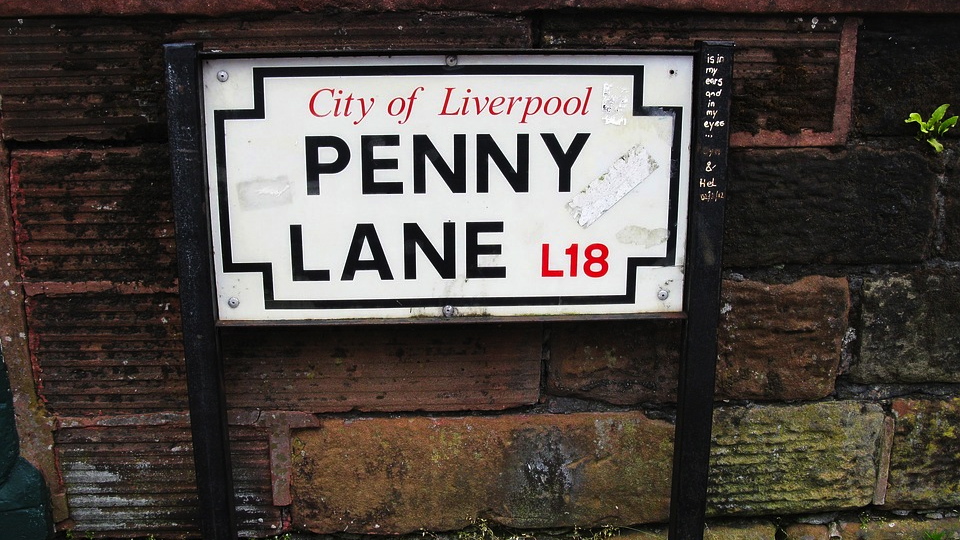Recording, mixing, editing: Getting Better, Lovely Rita
This session saw work continue on two Sgt. Pepper songs: Getting Better and Lovely Rita. It was perhaps more notable for being the one time when John Lennon took LSD in the recording studio.
Visitors to the studio on this occasion included music publisher Dick James, NEMS employee Peter Brown, and Ivan Vaughan, who had introduced John Lennon and Pal McCartney for the first time on July 6, 1957.
Also present was journalist and writer Hunter Davies, who had recently been commissioned to write The Beatles' authorised biography. His book, simply titled The Beatles, was published in September 1968 and documented a number of recording and songwriting sessions for the Sgt Pepper album.
The backing track for Getting Better had been recorded on March 9th and 10th, Ringo Starr was not needed on this evening so didn't attend.
The session began with a playback of the progress so far. McCartney was the most actively-engaged of the group, discussing with balance engineer Geoff Emerick on how the song should sound.
Two reduction mixes, numbered 13 and 14, were made to free space on the four-track tape. These mixes put the 9 March rhythm track and the tambura on one track, and bass guitar and drum overdubs on track two.
George Harrison and Ivan [Vaughan] went off to chat in a corner, but Paul and John listened carefully. Paul instructed the technician on which levers to press, telling him what he wanted, how it should be done, which bits he liked best. George Martin looked on, giving advice where necessary. John stared into space...They played the backing track of It's Getting Better [sic] for what seemed like the hundredth time, but Paul said he wasn't happy about it. They'd better get Ringo in and they would do it all again. Someone went to ring for Ringo.
Peter Brown arrived... They played him the backing track of It's Getting Better. As it was being played, Paul talked to one of the technicians and told him to try yet a different sound mix. He did so and Paul said that was much better. It would do. They didn't need to bring Ringo in now after all.
'And we've just ordered Ringo on toast,' said John. But Ringo was cancelled in time and the studio was got ready to record the sound track, the voices... The three of them held their heads round one microphone and sang It's Getting Better while up in the control box, George Martin and his two assistants got it all down on track. The three Beatles were singing, not playing, but through the headphones strapped to their ears they could hear the recording of the backing track. They were simply singing to their already recorded accompaniment.
In the studio itself, all that could be heard were the unaccompanied, un-electrified voices of the Beatles singing, without any backing. It all sounded flat and out of key.
Hunter Davies
The vocals were re-recorded, more successfully, on March 23, 1967. The Beatles' involvement in this session, meanwhile, drew to a close once John Lennon began to feel the effects of a tab of LSD he had mistakenly ingested.
Lennon carried with him a small silver art nouveau pill box which he had bought from Liberty of London. He kept a range of stimulants inside the box, and was in the habit of taking it out and selecting different drugs to take.
We were overdubbing voices on one of the Pepper tracks, and John, down in the studio, was obviously feeling unwell. I called over the intercom, 'What's the matter, John? Aren't you feeling very well?''No,' said John.
I went down and looked at him, and he said, 'I don't know. I'm feeling very strange.'
He certainly looked very ill, so I told him, 'You need some fresh air. Let's leave the others working, and I'll take you outside.'
The problem was where to go; there were the usual five hundred or so kids waiting for us at the front, keeping vigil like guard-dogs, and if we had dared to appear at the entrance there would have been uproar and they would probably have broken the gates down. So I took him up to the roof, above Number Two studio. I remember it was a lovely night, with very bright stars. Then I suddenly realised that the only protection around the edge of the roof was a parapet about six inches high, with a sheer drop of some ninety feet to the ground below, and I had to tell him, 'Don't go too near the edge, there's no rail there, John.' We walked around the roof for a while. Then he agreed to come back downstairs, and we packed up for the night.
It wasn't until much later that I learned what had happened. John was in the habit of taking pills, 'uppers', to give him the energy to get through the night. That evening, he had taken the wrong pill by mistake - a very large dose of LSD. But Paul knew, and went home with him and turned on as well, to keep him company. It seems they had a real trip. I knew they smoked pot, and I knew they took pills, but in my innocence I had no idea they were also into LSD.
All You Need Is Ears
Although they occasionally smoked cannabis during recording sessions, The Beatles never intentionally took acid while working.
I never took it in the studio. Once I did accidentally. I thought I was taking some uppers, and I was not in a state of handling it. I can't remember what album it was but I took it and then [whispers] I just noticed all of a sudden I got so scared on the mike. I said, 'What was it?' I thought I felt ill. I thought I was going cracked. Then I said, 'I must get some air.' They all took me upstairs on the roof, and George Martin was looking at me funny. And then it dawned on me, I must have taken acid. And I said, 'Well, I can't go on, I have to go.' So I just said, 'You'll have to do it and I'll just stay and watch.' I just [became] very nervous and just watching all of a sudden. 'Is it alright?' And they were saying, 'Yeah.' They were all being very kind. They said, 'Yes, it's alright.' And I said, 'Are you sure it's alright?' They carried on making the record.
Lennon Remembers, Jann S Wenner
